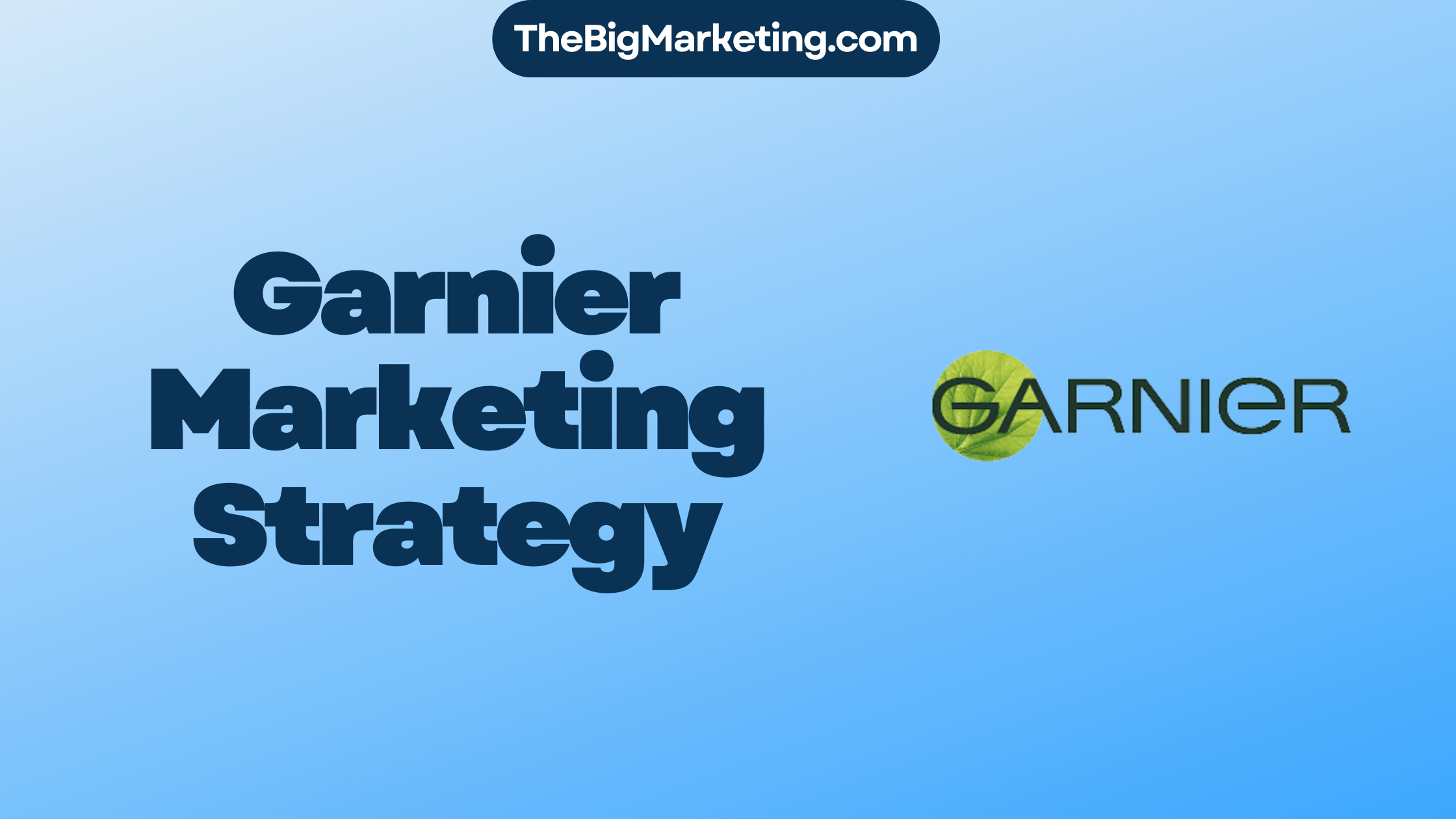A digital marketing strategy is imperative for businesses in 2024. It helps businesses catch customers where they are exploring search engines and social media, leading to improved conversion results and increased sales and revenue. A well-executed digital marketing strategy involves creating a comprehensive plan to get a product or brand in front of potential customers, with the goal of growing the brand and hitting specific revenue targets. This strategy takes into consideration various elements, such as market share, competitor analysis, developing an online value proposition, understanding customer behavior, and staying agile in a competitive market.
Key Takeaways:
- An effective digital marketing strategy is crucial for business success in 2024.
- It helps businesses reach potential customers through search engines and social media.
- A comprehensive plan is essential to grow the brand and achieve revenue targets.
- Market share, competitor analysis, online value proposition, and customer understanding are important factors to consider.
- The digital landscape is competitive, requiring businesses to stay agile and adapt to new strategies and technologies.
What is a Digital Marketing Strategy?
A digital marketing strategy is a comprehensive plan to promote a product or brand and reach potential customers through digital mediums. Unlike traditional marketing methods, a digital marketing strategy focuses solely on online platforms such as search engines, websites, and social media.
With a digital marketing strategy, specific tactics are implemented to maximize visibility and engagement. For example, businesses may utilize targeted social media advertisements to effectively reach the demographic most interested in their product or service.
Key components of a Digital Marketing Strategy
- Plan: A well-defined and documented plan is essential for a successful digital marketing strategy. It outlines the goals, target audience, and desired outcomes of the marketing campaign.
- Product or Brand: The strategy revolves around promoting a specific product or brand. It involves crafting a unique value proposition to differentiate it from competitors and attract potential customers.
- Potential Customers: Understanding the target audience is crucial in developing an effective digital marketing strategy. Analyzing customer demographics, preferences, and behaviors helps tailor the marketing efforts and reach the right people.
The Importance of Digital Marketing Strategy
A well-executed digital marketing strategy plays a vital role in the success of a business. It helps businesses:
- Gain a competitive edge by effectively reaching potential customers online.
- Build brand awareness and recognition through targeted marketing campaigns.
- Increase customer engagement and conversions.
- Drive traffic to websites or online stores, leading to revenue growth.
- Optimize marketing efforts by measuring campaign performance and making data-driven decisions.
Implementing an effective digital marketing strategy ensures businesses remain relevant in today’s digital landscape and capitalize on the vast opportunities provided by online platforms.
Why a Digital Marketing Strategy Is Important
A digital marketing strategy plays a crucial role in the success of businesses today. By understanding market share, competitors, and customer behaviors and needs, businesses can develop targeted approaches that yield optimal results in the competitive market. Without a well-defined digital marketing strategy, businesses risk losing market share to competitors who employ more effective online tactics.
One of the key advantages of a digital marketing strategy is the ability to create and communicate an online value proposition that resonates with customers. Through careful analysis and research, businesses can identify the unique benefits they offer and present them to customers in a compelling way. This helps in attracting and retaining customers in a crowded marketplace.
Additionally, a digital marketing strategy enables businesses to leverage valuable customer insights through user feedback tools and analytics. By investing in data collection and analysis, businesses can gain a deeper understanding of customer preferences, behaviors, and profiles. This knowledge allows for targeted marketing campaigns that effectively engage and convert customers.
In a competitive market, it is essential for businesses to remain agile and adaptable. A well-crafted digital marketing strategy provides the flexibility needed to continuously optimize campaigns and stay ahead of the competition. By monitoring market trends, consumer behavior, and competitor activities, businesses can make informed decisions and adjust their strategies accordingly.
Overall, a comprehensive digital marketing strategy is vital for businesses aiming to thrive in the modern digital landscape. It empowers businesses to understand market dynamics, develop compelling value propositions, connect with customers, and navigate a competitive market effectively.
Digital Marketing Strategy vs. Digital Marketing Campaign
A digital marketing strategy and a digital marketing campaign, while related, serve different purposes in achieving marketing goals. A digital marketing strategy is the overarching plan that outlines the approach, tactics, and goals for reaching potential customers. It takes into account factors such as target demographics, product benefits, and platforms to create a comprehensive roadmap for success.
A digital marketing campaign, on the other hand, is the practical implementation of the strategy. It involves executing specific tactics to promote a product or service to a specific audience. A campaign is the actionable part of the strategy that puts the plan into motion, utilizing various digital marketing channels and methods to achieve the desired outcomes.
For example, a digital marketing strategy might include using search engine optimization (SEO) to improve organic visibility, social media marketing to engage with the target audience, and content marketing to provide valuable information. Each of these tactics would be executed as part of a digital marketing campaign focused on specific platforms and target demographics.
Ultimately, a digital marketing strategy provides a blueprint for success, guiding the overall direction and approach, while digital marketing campaigns serve as the hands-on implementation to achieve specific objectives. By carefully aligning and executing both strategy and campaigns, businesses can maximize their digital marketing efforts and drive meaningful results.
The image above visually represents the relationship between a digital marketing strategy and a digital marketing campaign. The strategy acts as the foundation, providing the framework for the campaign’s tactics and implementation.
Digital Marketing Strategy vs. Digital Marketing Tactic
When it comes to digital marketing, it’s important to understand the difference between a digital marketing strategy and a digital marketing tactic. While they are interrelated, they serve different purposes in achieving marketing goals.
A Digital Marketing Strategy
A digital marketing strategy outlines the overarching plan and objectives for reaching target audiences and achieving specific business outcomes. It involves a comprehensive approach that considers various factors such as market analysis, competitor research, and customer insights. The Digital Marketing Strategy serves as a blueprint for the tactics and actions that will be implemented to achieve the desired results.
A Digital Marketing Tactic
A digital marketing tactic, on the other hand, is a specific action or technique implemented within the digital marketing strategy. It focuses on the execution of individual components to achieve short-term goals and objectives. Tactic helps in driving the implementation phase of the strategy, ensuring that various channels are utilized effectively to deliver desired outcomes. Tactic often has timelines and specific targets that align with the overall marketing strategy.
To illustrate the difference, let’s consider an example. Imagine a company wants to promote a new product through influencer marketing. Developing a strategy that involves identifying the target audience, selecting suitable social media platforms, and crafting a compelling brand message would be the digital marketing strategy. However, finding and reaching out to a specific influencer who aligns with the brand’s values and has a large following would be a digital marketing tactic, as it represents a specific action to implement the broader strategy.
| Key Differences | Digital Marketing Strategy | Digital Marketing Tactic |
|---|---|---|
| Definition | Comprehensive plan for achieving marketing goals | Specific actions and techniques within the strategy |
| Focus | Overall objectives and long-term planning | Short-term execution and immediate results |
| Scope | Broad and holistic, covering multiple channels and touchpoints | Narrow and specific, targeting individual tactics |
| Timeline | Long-term, continuous, and evolving | Short-term, with specific deadlines and targets |
In summary, the digital marketing strategy provides the roadmap for achieving marketing goals, while digital marketing tactics involve the specific actions and techniques implemented to execute the strategy effectively. Both strategy and tactics are essential components of a successful digital marketing campaign, working together to drive results and maximize the impact of marketing efforts.
How To Create a Digital Marketing Strategy
Creating a successful digital marketing strategy requires careful planning and execution. By following a systematic approach, you can ensure that your strategy effectively reaches your target audience and achieves your marketing goals. Here are the key steps to create a digital marketing strategy:
1. Understand Your Target Audience with Customer Persona
Start by creating a customer persona, a detailed profile that represents your ideal customer. Consider demographics, interests, pain points, and behavior. Understanding your target audience will help you tailor your marketing efforts to their needs and preferences.
2. Identify Your Goals
Define clear and measurable goals for your digital marketing strategy. Whether it’s increasing brand awareness, driving website traffic, generating leads, or boosting sales, your goals will guide your tactics and determine your success.
3. Develop Relevant Content
Create compelling and valuable content that resonates with your target audience. This can include blog posts, videos, infographics, case studies, or social media content. The content should align with your goals and cater to different stages of the buyer’s journey.
4. Choose the Right Channels
Identify the most effective digital marketing channels to reach your audience. This could include search engines, social media platforms, email marketing, content distribution networks, or influencer partnerships. By selecting the right channels, you can maximize your reach and engagement.
5. Implement Automation and Optimization
Streamline your digital marketing efforts by implementing automation tools. This can help automate repetitive tasks, manage campaigns, and gain valuable insights. Additionally, optimize your website and marketing materials for mobile devices to reach users on-the-go.
6. Allocate a Budget
Assign a realistic budget for your digital marketing strategy. Consider factors such as advertising costs, content creation, software subscriptions, and outsourcing. Allocate your budget strategically to ensure you maximize your return on investment.
7. Track Performance and Make Adjustments
Regularly monitor the performance of your digital marketing campaigns using analytics tools. Track key metrics such as website traffic, conversion rates, engagement, and ROI. Use these insights to make data-driven adjustments and optimize your strategy for better results.
By following these steps, you can create a comprehensive digital marketing strategy that effectively reaches your target audience, achieves your goals, and drives business growth.
Rethink the Role of AI
The role of AI in digital marketing is evolving and increasingly important. Artificial Intelligence can be utilized for various purposes such as automation, optimization, and personalization, enabling marketers to create tailored and engaging experiences for their customers.
One of the significant benefits of AI is its ability to analyze vast amounts of data and generate valuable insights. By leveraging AI-powered analytics, marketers can gain valuable information about customer behavior, preferences, and trends. These insights can then inform marketing decisions and actions, allowing businesses to refine their strategies for improved results.
In addition to providing insights, AI can assist with marketing automation, simplifying repetitive tasks and freeing up valuable time for marketers to focus on more strategic initiatives. It can streamline workflows and enhance operational efficiency, enabling businesses to deliver targeted campaigns at scale.
Moreover, AI enables personalized marketing experiences, helping marketers deliver relevant content and offers to individual customers at the right time. By capturing and analyzing customer data, AI-powered systems can identify patterns and make personalized recommendations, resulting in higher engagement and conversion rates.
The Ethical Use of AI
While AI offers countless benefits for digital marketing, it is crucial to use it as an assistant rather than a replacement for human involvement. Ethical considerations should be at the forefront of AI utilization, ensuring transparent and responsible use of the technology.
Furthermore, AI can play a significant role in improving data quality. Through advanced algorithms and data analysis, AI can identify and rectify data discrepancies, helping marketers make data-driven decisions based on reliable information.
Collaboration is another area where AI can contribute. By facilitating communication and knowledge sharing among team members, AI-powered collaboration tools promote efficient teamwork and enhance overall productivity.
Overall, AI is revolutionizing the field of digital marketing, offering marketers powerful tools to automate, optimize, and personalize their strategies. By leveraging AI technologies responsibly, marketers can unlock new opportunities, improve customer experiences, and drive business growth.
| Benefits of AI in Digital Marketing | Considerations for AI |
|---|---|
|
|
Prepare for a Post-Third-Party Cookie World
With the imminent phase-out of third-party cookies by popular browsers, marketers must adapt to new strategies for reaching and engaging their online audiences. This shift is driven by the increasing importance of privacy and data protection concerns. While this change presents challenges, it also opens up opportunities to reassess data collection methods and explore privacy-preserving technologies.
One alternative to third-party cookies is the use of first-party data. First-party data is collected directly from customers and provides valuable insights into their preferences and behaviors. By leveraging this data, marketers can create personalized experiences and targeted campaigns that resonate with their audience.
Another effective strategy is leveraging contextual advertising. Contextual advertising matches ads to the content or context of a website or app, ensuring relevance and minimizing the reliance on personal user data. This approach allows marketers to deliver targeted messages without compromising user privacy.
Privacy-preserving technologies have also emerged as powerful tools for measuring and optimizing campaigns while respecting user privacy. These technologies, such as differential privacy and federated learning, enable marketers to analyze data without exposing personally identifiable information. By applying advanced privacy-preserving techniques, marketers can maintain user trust and comply with evolving privacy regulations.
The Benefits of Privacy-Preserving Technologies
Privacy-preserving technologies offer several key advantages:
- Enhanced user privacy: Privacy-preserving technologies prioritize user privacy by safeguarding personal data from unauthorized access.
- Compliance with regulations: By adopting privacy-preserving technologies, marketers can align their practices with privacy regulations such as the General Data Protection Regulation (GDPR) and the California Consumer Privacy Act (CCPA).
- Improved data accuracy: These technologies allow marketers to collect and analyze data while ensuring the accuracy and integrity of the information.
- Increased transparency: Privacy-preserving technologies promote transparency by providing users with more control over their data and offering clear explanations of data collection and usage.
As the digital landscape continues to evolve, embracing privacy-preserving technologies will be essential for marketers to navigate the post-third-party cookie era effectively. By leveraging first-party data and contextual advertising while incorporating privacy-preserving technologies, marketers can continue to deliver targeted and personalized experiences while respecting user privacy.
| Advantages | Description |
|---|---|
| Enhanced user privacy | Privacy-preserving technologies prioritize user privacy by safeguarding personal data from unauthorized access. |
| Compliance with regulations | By adopting privacy-preserving technologies, marketers can align their practices with privacy regulations such as the General Data Protection Regulation (GDPR) and the California Consumer Privacy Act (CCPA). |
| Improved data accuracy | These technologies allow marketers to collect and analyze data while ensuring the accuracy and integrity of the information. |
| Increased transparency | Privacy-preserving technologies promote transparency by providing users with more control over their data and offering clear explanations of data collection and usage. |
Unlock Growth, Power Profitability
With slower global economic growth projected for 2024, marketers need to focus on unlocking growth and powering profitability. By increasing customer lifetime value, marketers can boost revenue, reduce costs, and improve loyalty. Acquiring the right customers, retaining existing customers, upselling and cross-selling, and reactivating dormant customers are strategies to increase customer lifetime value.
Acquiring the Right Customers
In a challenging global economy, it becomes even more crucial for marketers to target consumers who are most likely to make significant consumer spending. Market penetration can be enhanced by identifying the right customer segments and tailoring marketing efforts to their needs and preferences. By investing resources in reaching the right audience, marketers can maximize their return on investment and drive revenue growth.
Retaining Existing Customers
Customer loyalty is a valuable asset that can drive long-term profitability. By implementing strategies to strengthen customer relationships, such as personalized communication, exclusive offers, and excellent customer service, marketers can foster loyalty and encourage repeat purchases. Building a solid customer base of loyal customers provides a stable and reliable source of revenue, even in uncertain economic times.
Upselling and Cross-Selling
Maximizing revenue from existing customers is a cost-effective strategy for boosting profitability. Marketers can capitalize on customer trust and satisfaction by offering complementary products or upgrades through upselling and cross-selling. By presenting relevant and appealing options, marketers can increase the average purchase value and generate additional revenue streams.
Reactivating Dormant Customers
Reaching out to dormant or inactive customers presents an untapped opportunity for growth. By implementing targeted reactivation campaigns, marketers can remind dormant customers of their brand and entice them with personalized offers or incentives to re-engage. Reactivating dormant customers not only increases revenue but also strengthens customer loyalty and extends customer lifetime value.
| Strategy | Benefits |
|---|---|
| Acquiring the Right Customers | – Increased market penetration – Targeted marketing efforts – Improved revenue growth |
| Retaining Existing Customers | – Enhanced customer loyalty – Repeat purchases – Stable revenue source |
| Upselling and Cross-Selling | – Increased average purchase value – Additional revenue streams |
| Reactivating Dormant Customers | – Untapped growth potential – Strengthened customer loyalty – Extended customer lifetime value |
By focusing on unlocking growth and leveraging customer lifetime value, marketers can navigate a challenging economic landscape and power profitability. Acquiring the right customers, retaining existing customers, upselling and cross-selling, and reactivating dormant customers are effective strategies to drive revenue, reduce costs, and foster loyalty. By continuously driving customer value, marketers can maintain a competitive edge and thrive in the ever-evolving global marketplace.
Innovate Customer Engagement
Customer engagement plays a vital role in building trust, fostering loyalty, and driving advocacy. In the age of digital marketing, it is essential for marketers to innovate their approach to customer engagement. By adopting a customer-centric and omnichannel strategy, marketers can create seamless and personalized experiences that capture the attention of their target audience.
One effective way to enhance customer engagement is through conversational marketing. By utilizing chatbots, live chat, and messaging apps, businesses can interact with customers in real-time and provide personalized assistance. This approach allows for open and authentic conversations that build a stronger connection between the brand and the customer.
Interactive content is another powerful tool for engaging customers. By incorporating interactive elements such as quizzes, polls, and calculators into their marketing campaigns, businesses can encourage active participation from customers. Interactive content not only captures attention but also provides valuable insights into customer preferences and behaviors.
Additionally, marketers can leverage immersive media to enhance customer engagement. Virtual reality (VR) and augmented reality (AR) experiences can transport customers into a virtual environment where they can interact with products or services. This immersive experience creates a lasting impression and fosters a deeper emotional connection between the customer and the brand.
By utilizing these customer engagement strategies, marketers can create consistent and memorable experiences across multiple channels. This omnichannel approach ensures that customers can engage with the brand seamlessly, whether they are browsing on a website, scrolling through social media, or interacting with a mobile app.
| Customer Engagement Strategies | Brief Description |
|---|---|
| Conversational Marketing | Utilize chatbots and messaging apps to engage customers in real-time conversations. |
| Interactive Content | Incorporate quizzes, polls, and calculators to encourage active participation from customers. |
| Immersive Media | Create virtual reality (VR) and augmented reality (AR) experiences to provide interactive and memorable engagements. |
In conclusion, to drive customer engagement in the digital age, marketers must adopt a customer-centric and omnichannel approach. Leveraging conversational marketing, interactive content, and immersive media enables marketers to create personalized and engaging experiences that capture customers’ attention. By constantly innovating customer engagement strategies, businesses can build stronger relationships with their customers and foster long-term loyalty.
Embrace Social Responsibility
Consumers today are increasingly mindful of the social and environmental impact of their consumption choices. In order to maintain a positive brand reputation and meet evolving consumer preferences, it is crucial for marketers to embrace social responsibility as a core component of their marketing strategies.
By aligning marketing strategies with corporate social responsibility (CSR) goals, companies can create a positive and lasting impact on society while also gaining the trust and loyalty of their customers. Incorporating social responsibility into marketing efforts helps strengthen brand reputation and enhances the overall consumer experience.
One of the key advantages of integrating social responsibility into marketing strategies is the positive impact it has on consumer preferences. Studies have shown that consumers are more likely to support brands that demonstrate a commitment to social and environmental causes. By highlighting CSR initiatives in marketing campaigns, companies can not only attract socially conscious consumers but also differentiate themselves from competitors.
To effectively embrace social responsibility, marketers can incorporate the following practices:
- Integrate CSR messaging and storytelling into marketing campaigns to educate consumers about the positive impact of their purchasing decisions.
- Collaborate with nonprofit organizations or participate in philanthropic initiatives that align with the brand’s values and mission.
- Transparently communicate CSR efforts through various channels such as social media, website content, and annual reports.
- Engage in cause-related marketing to support social and environmental causes, creating a win-win situation for both the brand and the cause.
By embracing social responsibility, marketers can not only make a positive difference in the world but also enhance their brand’s reputation, foster customer loyalty, and drive business growth.
Example Table: Social Responsibility Initiatives
| Company | CSR Initiative | Positive Impact |
|---|---|---|
| Patagonia | Commitment to sustainable manufacturing practices | Reduces environmental footprint and attracts environmentally conscious customers |
| Unilever | Project Sunlight: Promoting sustainability and hygiene | Improves brand reputation and fosters long-term customer loyalty |
| TOMS | One for One: Donating a pair of shoes for every purchase | Makes a tangible difference in the lives of underprivileged individuals and generates positive word-of-mouth |
Conclusion
In conclusion, a well-executed online marketing strategy plays a crucial role in achieving future success. By effectively leveraging digital platforms and understanding market dynamics, businesses can capture their target audience’s attention in the vast digital landscape.
A comprehensive digital marketing plan takes into account various factors, such as market share, competitor analysis, and customer behavior. This allows businesses to develop a competitive online value proposition and create relevant, personalized experiences for their customers.
Furthermore, embracing emerging trends like AI and preparing for a post-third-party cookie world are vital for staying ahead. AI-powered marketing automation and personalization help businesses optimize customer engagements and make data-driven decisions, while privacy-preserving technologies ensure a responsible approach to data collection and contextual advertising.
By incorporating social responsibility into their online marketing strategies, businesses not only build a positive brand reputation but also meet the growing consumer demand for sustainability and ethical practices. With a well-designed and implemented online marketing strategy, businesses can navigate the ever-evolving digital landscape and pave the way for future success.




